Northumberland: A History Lover's Paradise
Postcards (and a wee bit of history) from my recent adventure.
Hello, I’m Beth! I’m a full time creator based in the Cairngorms in love with Scotland and Scottish history. Subscribers receive weekly newsletters about Scotland’s history and folklore, and a little about my life living and adventuring in this country. If you’d like to support my work as a writer, you can become a paid subscriber.
Interested? Click subscribe…
Hello friends!
I feel like it's been a lot longer than I intended since I last wrote to you. Two weddings and a family holiday (Four Weddings reboot anyone?) were the perfect opportunity for me to take a bit of a break from work. That break took me somewhere that has been on my list to visit for a LONG time: Northumberland.
For those unfamiliar with Northumberland, it is a stunning county only a hop, skip, and a jump over the Anglo-Scottish border into England. It has an incredibly rich history, evident through the fact that Northumberland has more castles than any other English county.
Moreover, Northumberland’s position on the modern-day border with Scotland means that it shares a long and often complicated historical relationship with its neighbour to the north. From pilgrimages and saints to battlefields and border reivers, I have had my eye on Northumberland for years (with only a short overnight on a social media campaign there several years ago not quite scratching the itch). Now that I have finally visited, I can safely say that I have fallen absolutely head over heels in love with the county and already I am desperate to go back and explore more.
Today, I thought I’d share a little about my trip to Northumberland and some of the magnificent historic sites that I visited.

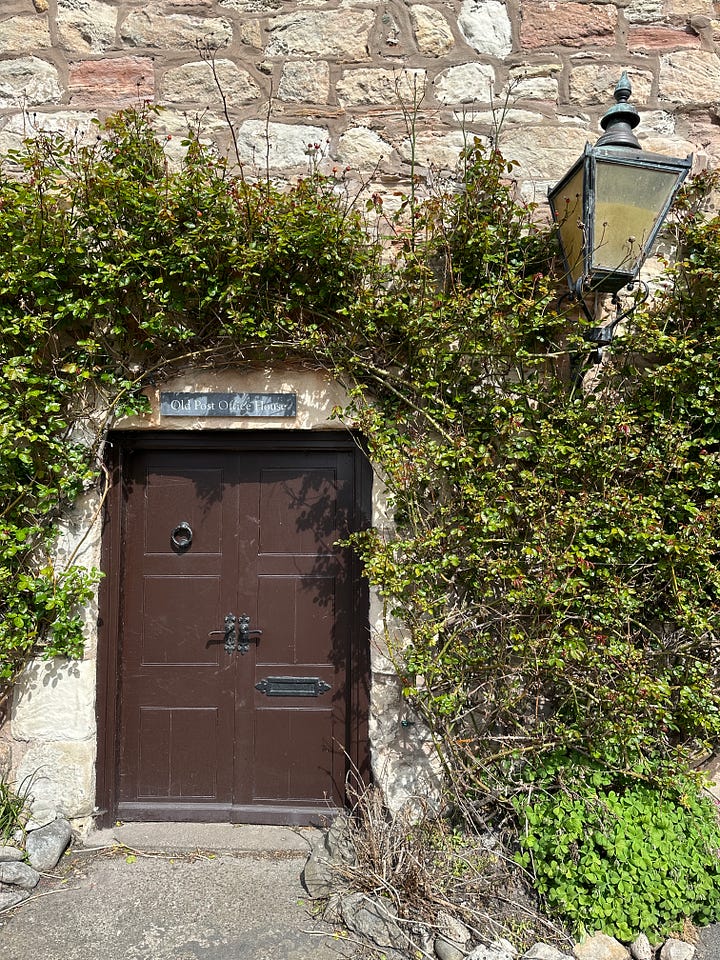
DUNSTANBURGH CASTLE
The first castle that I visited during my trip was the mighty Dunstanburgh Castle, a true behemoth of a medieval fortress. It was built from around 1313 by Thomas, Earl of Lancaster, cousin of Edward II of England and regularly the leader of opposition against his royal relative.
Edward’s reign is unfortunately synonymous with failure, from his multiple defeats against the Scots and eventual deposition from power, to his inability to manage the factionalism of his nobility and tendency to pick ‘favourites’. Thomas recurrently challenged Edward’s royal authority and led a rebellion against his cousin in 1322, which ended with his defeat at the Battle of Boroughbridge and subsequent execution. It is interesting to think what might have happened had Thomas instead defeated Edward, and whether we might have seen a King Thomas I of England.
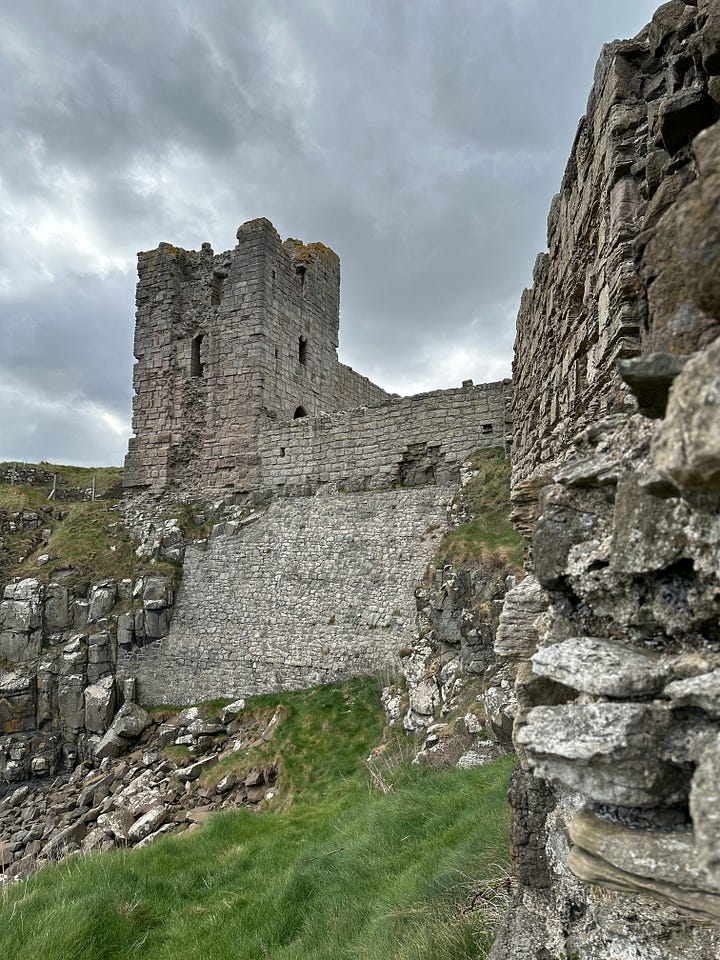
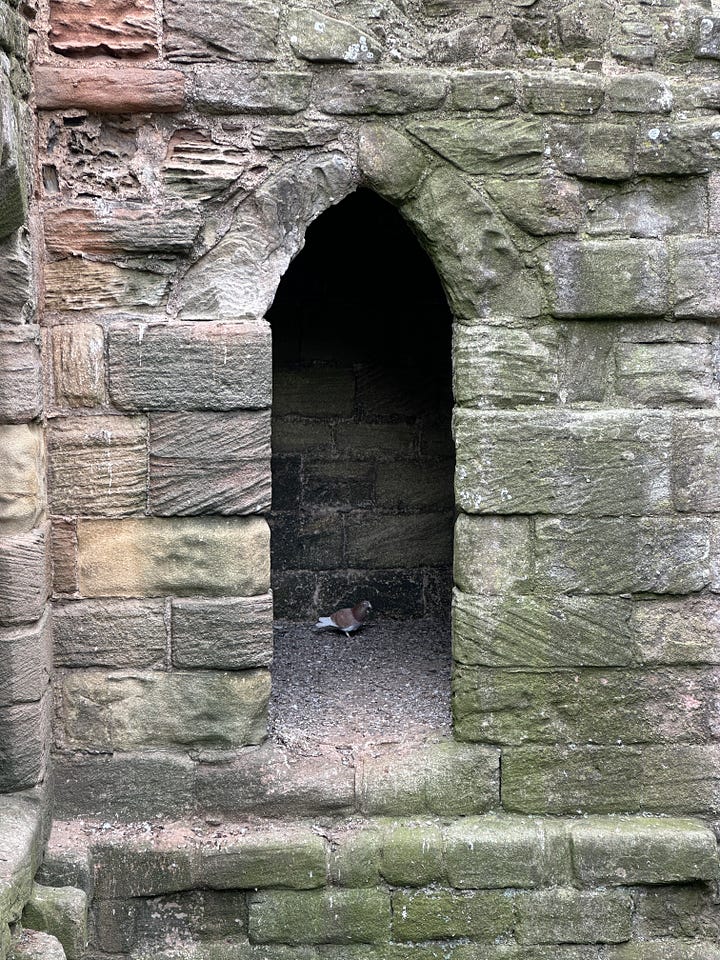


Dunstanburgh’s construction under Thomas of Lancaster served several purposes. Firstly, it was a major military fortress built during a time of increased Scottish raids into England, that would also serve Thomas well in the event of a civil war against the English Crown. Secondly, it was a magnificent display of wealth and influence from the most powerful man in England besides the king. Thirdly, it was a direct flaunt of that power in the face of the royal castle of Bamburgh, located only 10 miles up the coast from Dunstanburgh and visible on a clear day.
Although Dunstanburgh is a ruin today, it is absolutely huge and a lasting legacy of tumultuous reign of Edward II and the executed cousin who attempted to overthrow him. You can still see remnants of window seats and doorways, elaborate rooms and walkways that once filled the haunting towers that now reach empty into the sky. Only pigeons live there now.
BAMBURGH CASTLE
Do I have any fans of The Last Kingdom here? I’m a huge fan of the show and it's one of many reasons why I’ve wanted to visit Bamburgh Castle for a while. For those who aren’t familiar, Bamburgh Castle was a primary seat of the Kingdom of Northumbria and remained a critical fortress in Northumberland for many centuries. It is the home of The Last Kingdom’s leading character, Uhtred Ragnarsson/Uhtredson, also known as Uhtred of Bebbanburg, the name which preceded Bamburgh. If you love a good historical drama (and don’t mind pretty gruesome battle scenes and becoming emotionally attached to fictional characters from 9th-10th century England) then I’d definitely recommend it.
I had such an incredible time visiting Bamburgh. Although much of the structure that you see today was restored from the 18th to 19th centuries, it has quite an ancient atmosphere. Gazing across the sand dunes out to the North Sea from the battlements, it is quite extraordinary to think of how many people over the centuries looked upon that similar landscape.
And there is indeed many centuries of history at Bamburgh Castle. Perched atop a volcanic crag, this was the site of a Brittonic fort which the Anglo-Saxons and Britons wrestled for control over during the 6th to 7th centuries. Its very name, Bamburgh, is a gradual change from its earlier Brittonic name of Bebbanburg, in honour of the wife of Æthelfrith of Bernicia—Bebba.



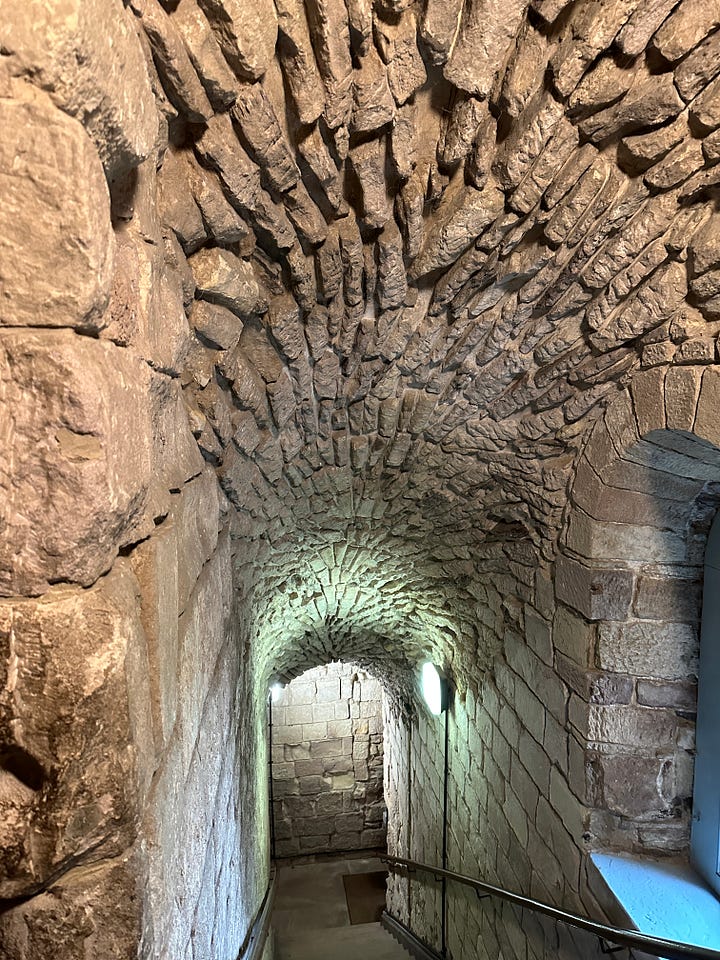
Following the Norman Conquest of 1066, Bamburgh developed into a more solid fortress of stone. In 1095, it became a royal castle after being taken from the earls of Northumbria, who had rebelled against the Norman King William II. Bamburgh Castle would remain in royal hands for several centuries to prevent such an impregnable fortress from ever being used against the English Crown again.
The oldest surviving part of the castle that you can see today is its mighty keep, which was completed by 1164 during the reign of Henry II of England. With walls 11ft thick in places, this impressive building was by far my favourite part of the castle. Blame the medievalist in me, but there was something absolutely incredible about exploring vaulted rooms and narrow passageways that had been constructed over 800 years ago. I especially loved the stone patterns in the vaulted roof. It's hard not to think about who might have laid those stones in the 12th century.
If you’re thinking about a potential trip to explore Northumberland, then I do think that Bamburgh is worth the visit. From its long history and incredible keep, to its weird and wonderful collection of artefacts and views over the North Sea, this isn’t one to miss.
LINDISFARNE
Lindisfarne. What can I say? My visit to Lindisfarne was everything and more I had hoped it would be. I was only there for 7 hours, crammed in between tide times, but I could have spent so much longer exploring this truly unique place.
Also known as Holy Island, Lindisfarne has an incredible history. This has been a Christian religious site since 634, when St Aidan travelled from Iona on Scotland’s west coast to influence the growth of Christianity in Northumbria. With this in mind, it's not surprising that Lindisfarne is nicknamed ‘the Cradle of Celtic Christianity’.
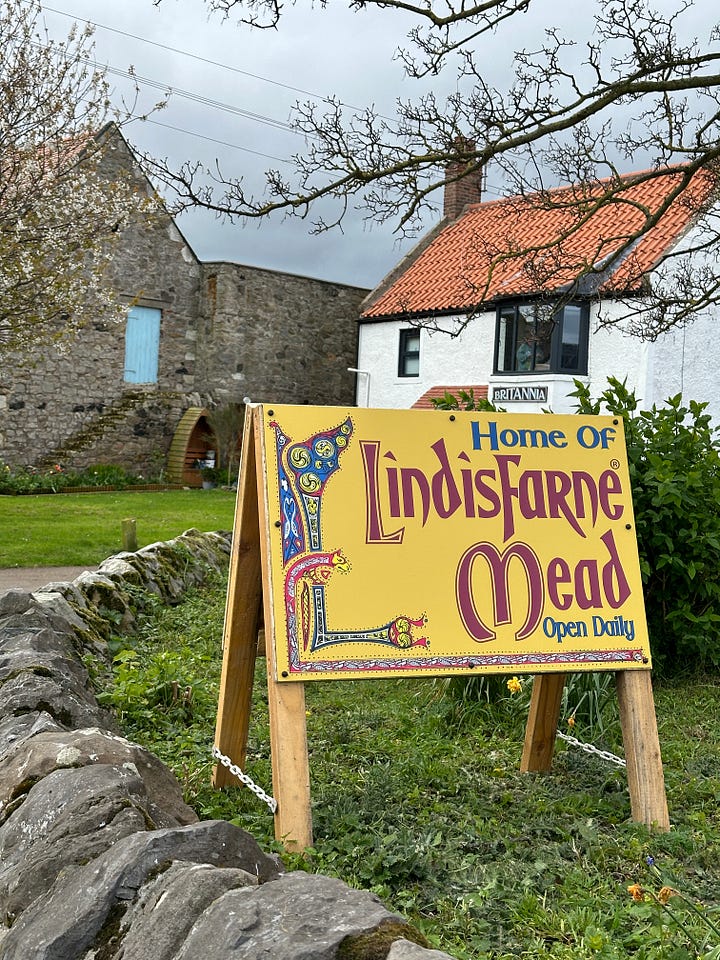

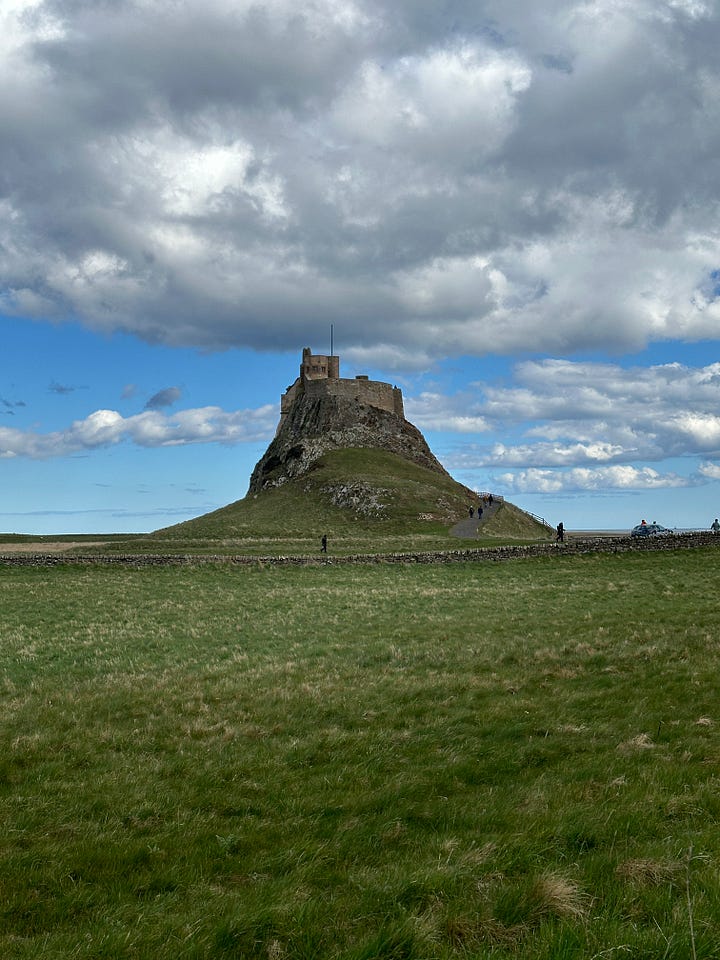
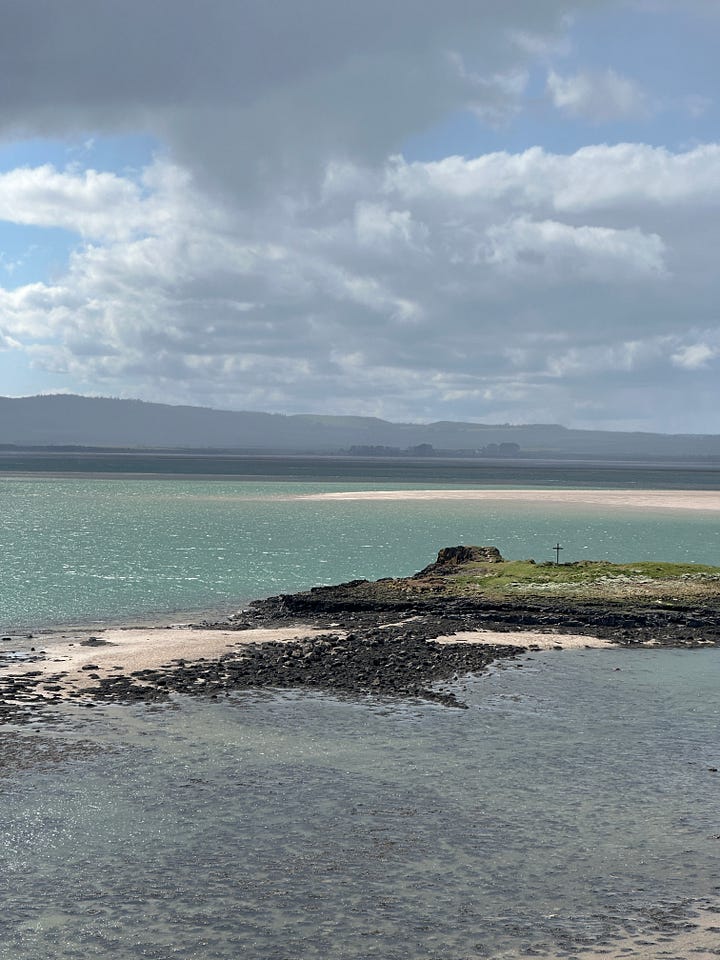
Another prominent saint associated with Lindisfarne is St Cuthbert, who is arguably one of England and Scotland’s most famous saintly names. Cuthbert was originally a monk of Melrose Abbey before journeying to join the community at Lindisfarne, where he later served as Bishop. Cuthbert’s influence can still be felt on the island today, from the affectionately nicknamed ‘Cuddy’s’ ducks (a sea-duck called the common eider, favoured and protected by Cuthbert) to the long pilgrimage of the St Cuthbert’s Way which ends at Lindisfarne.
Upon his death in 687, Cuthbert was interred on the island. However, he did not stay there for long. In 793, Lindisfarne was sacked by the Vikings, a brutal event which is often viewed as the beginning of the Viking Age and which resulted in the eventual abandoning of Lindisfarne by 875. Cuthbert’s holy remains were evacuated to the mainland, where they changed location until finally being laid to rest at Durham Cathedral. A monastery on Lindisfarne was only reestablished in 1093 by monks from Durham. The priory ruins which you can see today date from the 12th century, and were the home of that reestablished religious community.
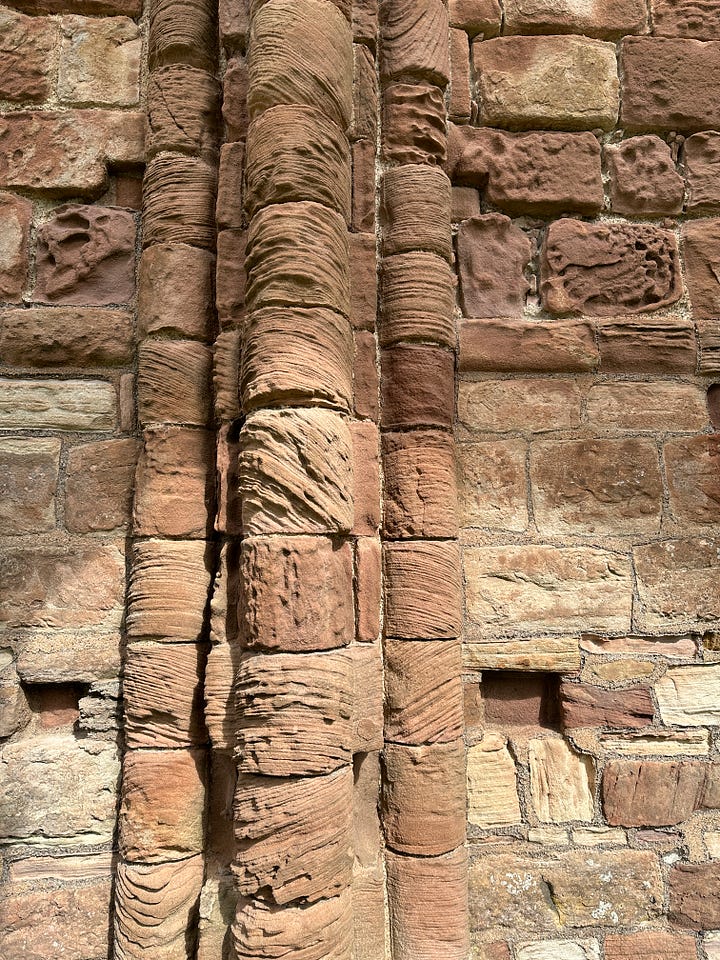

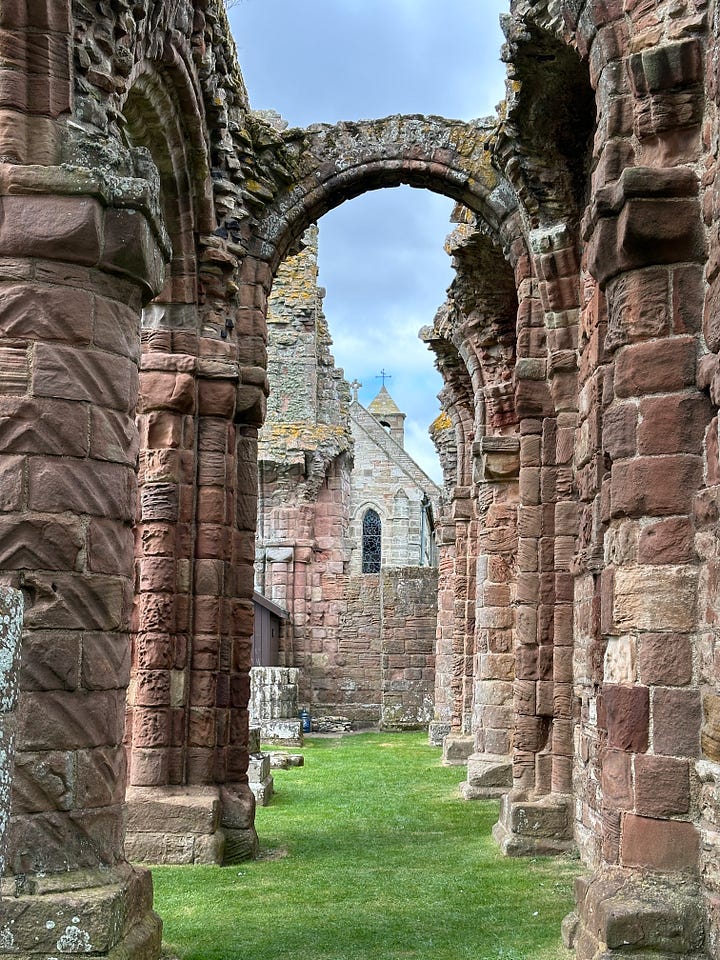
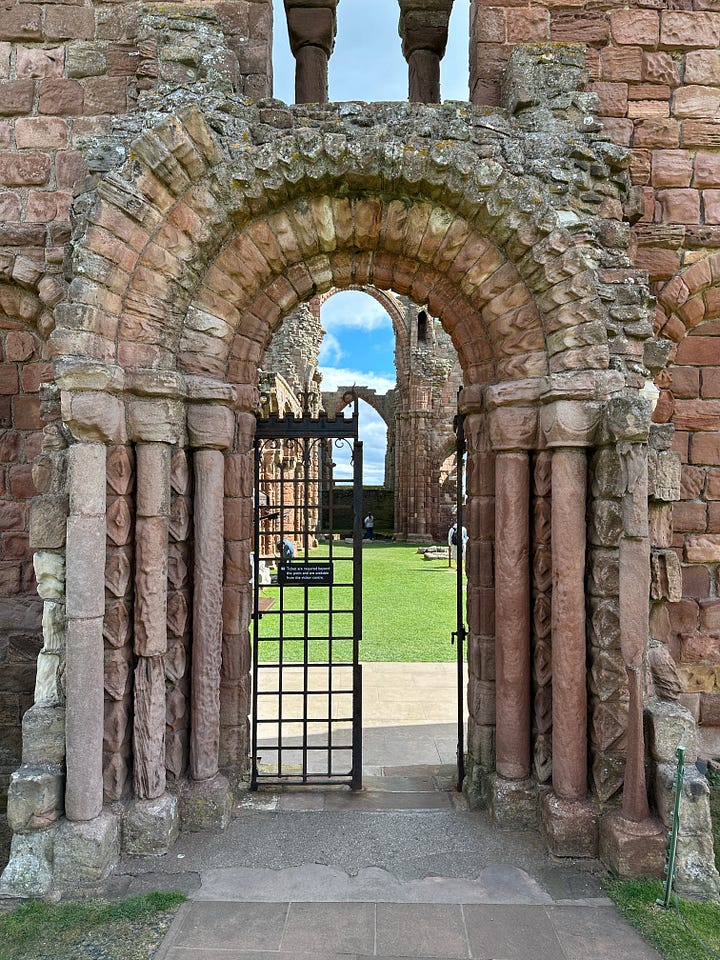
Have you heard of ‘thin places’? This concept is thought to originate in ancient Celtic society, and is a location where the veil between the physical and spiritual world is very thin. You might feel a tangible sense of energy, emotion, atmosphere.
Personally, there have been times when I have visited certain historic sites—usually very old ones—and I have felt an incredibly strong sense of the passage of time and a connection stretching across the centuries to those who might have walked there before. For me, it is where the yawning gap of history suddenly feels very small. I can’t explain it, but it's there, and Lindisfarne definitely feels like a ‘thin place’ to me. Have you ever experienced this when visiting a historic site?
Thanks so much for reading about my historic highlights from my trip to Northumberland. I’m absolutely desperate to go back again as I feel like I’ve only scratched the surface of the sheer amount of history that there is to explore in this beautiful county.
Don’t worry—I’ll be back with Scottish content soon!
See you next time,
Beth xx
If you’d like to read more, why not try these out?




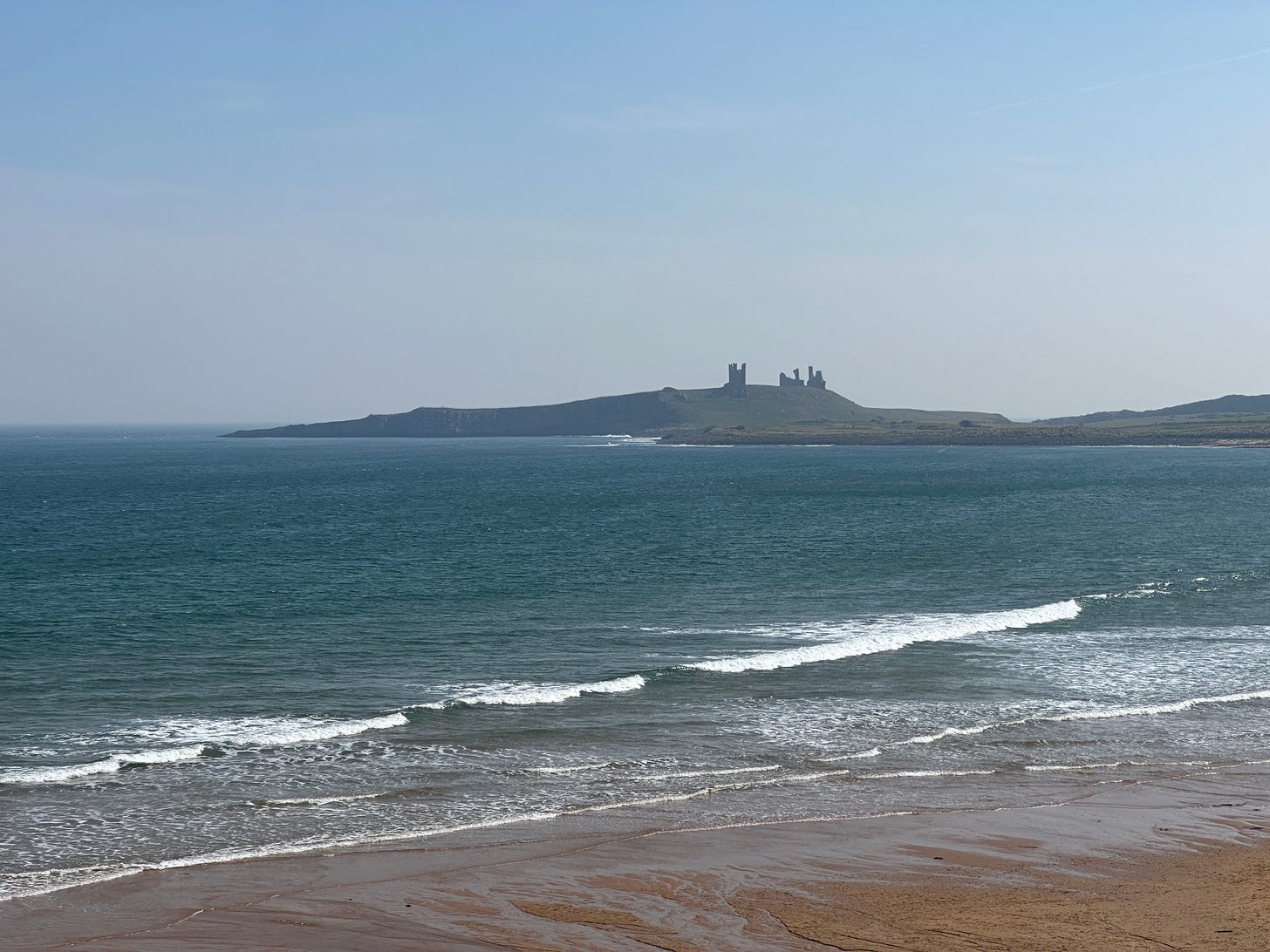

I very much agree about Lindisfarne. My sons (not exactly mad about history) were fascinated by the ruins of the monastery and we spent ages walking about there. Always something special about places that are cut off by the tide. We were once at an owl display across from there on the mainland and a helicopter appeared unexpectedly behind the owls to rescue a couple who had driven their car on to the causeway at the wrong time.
That sounds like a wonderful trip. I walked the St Cuthbert's Way 11 years ago with friends and will never forget arriving at Lindesfarne, walking across the sands at low tide to the eerie sound of the singing seals. Definitely a thin place.
My husband (who absolutely does not believe in ghosts) had what sounds remarkably like a ghostly encounter on Lindesfarne 30 years ago. He slept on the beach, and woke just before dawn to find a man in a long robe and what looked like a pair of medieval leather boots standing right beside his sleeping bag. The man said nothing and walked away as if my husband wasn't there. I think it was probably the ghost of a medieval monk, coming to tell him you're not allowed to wild camp on Lindesfarne.